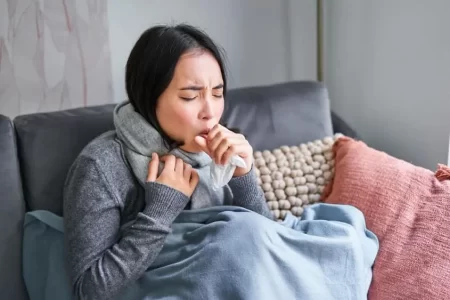Since beginning 2020, World Health Organization (WHO) China country office, Regional Office and the headquarters have been working collaboratively to counter to this outbreak of COVID-19. WHO declared the outbreak a Public Health Emergency of International Concern (PHEIC) in January. On 11 March, WHO Director General called COVID-19 as a pandemic that require global attention.
WHO is working around the clock to provide necessary awareness, preparedness guidelines, establish prevention measures, and support with sophisticated medical treatment globally. But still, the new coronavirus (COVID-19) appears to be easily spread. The reason is that this virus spreads easily and mostly through person-to-person contact within about a 6-foot (1.8 meters) radius, according to the Centers for Disease Control and Prevention (CDC).
How Do You Catch Novel Coronavirus?
People who are infected with COVID-19, the disease caused by the coronavirus, push viral particles in the air through coughing and sneezing. These particles can then come in contact with other people or nearby surfaces and eventually land in the mouths, face, or noses of those who touch them or are nearby to them.
But the good news is that the novel coronavirus disease is not among the most transmissible diseases out there.
You can also catch SARS-CoV-2 (novel coronavirus) by touching a surface where the virus is already present and then touching someone’s mouth, nose, face or eyes. CDC believes that this method of transmission is less common.
Some coronaviruses can live on surfaces for several days. However, there is not much we know about the new coronavirus and its ability to survive on different surfaces. Research is rapidly being conducted to understand more about the nature and abilities of these viruses.
Fortunately, alcohol based sanitizers and soaps are effective at killing those coronaviruses that do survive on surfaces.
When Will the Coronavirus Outbreak (COVID-19) End and How?
As with the past pandemics and outbreaks, coronavirus outbreak will also eventually end. But the bigger question is how will this happen and when? There are ways in which the outbreak could end — though virologists and epidemiologists are not confident about it yet.
People May Develop Immunity
Scientists say one possibility is that infected cases will start decreasing when enough people develop immunity, either through infection or vaccination. Another possibility is that the virus will continue to spread and establish itself as a common virus.
“It is increasingly likely that this virus will spread worldwide,” said Aubree Gordon, an associate professor of epidemiology at the University of Michigan. “We still may have some chance to contain it, but that window does appear to be closing.”
An expert said that the outbreak may end after the virus infects those who are most susceptible such as elderly and suffering with medical illnesses, and those who survive it will build immunity eventually.
Covid-19 Stops Spreading as Summers Approach
Another possibility that could slow the spread of coronavirus is the change in season.
Some viruses, but not all, are less transmissible when the levels of temperatures and humidity are high such as in summers. In these conditions, the life of viruses to live on surfaces is shortened. Human behavior also changes in summers. People do not spend too much of time in confined and crowded spaces. Experts say that a lot on how the outbreak will end or how the situation improves depends on the next few months and the seasonal changes in these months.
But another study suggests that humidity is not correlated with transmissibility of Covid-19. The data so far are provisional and studies are still going on to understand the potential effect of temperature and humidity on transmissibility of the coronaviruses.
Ending the Outbreak With a Vaccination
Antiviral treatments or vaccines are needed to get rid of this virus. Researchers are working hard to produce these vaccines at record speeds. They are working on new vaccine technologies called mRNA vaccines that don’t use viruses at all in their production process.
It still could be a year or even more to test the safety and efficacy of these vaccines and other treatment modalities.
Recently, a group of scientists identified detailed spike structure of the new coronavirus. The virus might be using these spikes to engage with surfaces and infect human cells, which potentially opens the door to a treatment.
You may want to read these related articles also on coronaviruses:
Severe Acute Respiratory Syndrome (SARS) Coronavirus – SARS-CoV
Coronavirus Infection (COVID-19) in Children
Mutations in the virus
SARS-CoV-2 may mutate in a way that may be beneficial for humans. It is then more difficult for the virus to infect people.
But health officials aren’t only sitting back to wait to see how the virus will behave and mutate. The scientists worldwide are racing to find a vaccine and treatment.
Containment
Containment efforts in China appear to be working, at least according to the country’s official figures. The number of new reported cases decreased compared to earlier statistics.
Hubei province, where the city of Wuhan is located, the epicenter of the outbreak was placed on complete lockdown. In other parts of China also, stringent containment, travel and quarantine measures were placed. The WHO has praised the Chinese government’s containment efforts to counter this pandemic.
Some epidemiologists and virologists have though questioned the theory of containment. The suspect if the approach of containment will work and be enough to end the outbreak.
Some expert said the there are indications to suggest that the virus is not containable at all.






